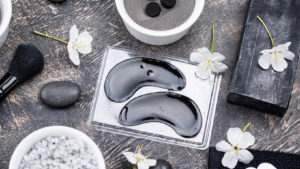In a world where everyone’s on the lookout for quick fixes and easy wellness solutions, wellness patches have emerged as a popular choice. These small, adhesive patches claim to deliver a steady stream of nutrients and beneficial substances right through the skin. But how effective are they really?
This article dives into the world of wellness patches, shedding light on their purported benefits, the science behind them, and the controversies that surround them. Whether you’re a wellness enthusiast or a skeptical observer, you’ll find this exploration both enlightening and intriguing. Buckle up for a journey into this fascinating aspect of modern wellness culture.
Wellness Patches

Delving deeper into the concept and popularity of wellness patches, we unravel the intricacies in this section.
Wellness Patches, also known as transdermal patches, embody the information-age response to nutrient delivery. Firmly attached to the skin, these adhesive patches allow for consistent nutrient absorption directly into the bloodstream. Researchers at reputed institutions have developed these patches to provide essential vitamins, minerals, and other nutrients that the body may lack.
Examining Different Types of Wellness Patches
Beyond the broad appeal of wellness patches, they come in a diverse range of formats tailored to different health categories. This variety reflects the spectrum of consumer needs and the move toward personalized wellness. Below, a closer look is taken at three popular types: nutrient patches, sleep and relaxation patches, and detox and anti-stress patches.
Nutrient Patches
At the forefront, nutrient patches deliver essential vitamins and minerals directly into the bloodstream. Compared to traditional oral supplementation, they provide a more efficient and convenient way to receive optimal nutrient levels. One popular example is Iron patches, especially beneficial for individuals dealing with anemia or iron deficiencies. Similarly, Multi-Vitamin patches provide a range of crucial nutrients in one application, perfect for people seeking an all-in-one wellness solution.
Sleep and Relaxation Patches

Next come sleep and relaxation patches, offering a viable alternative to traditional sleep aids. Instead of ingesting sleeping pills or supplements, individuals place a patch on the skin to naturally encourage sleep. Melatonin patches, for instance, release this hormone proven to adjust the body’s sleep-wake cycle. Additionally, it’s seen CBD-infused patches gaining popularity for their potential to reduce anxiety and induce calm, facilitating better sleep.
Detox and Anti-Stress Patches
Lastly, detox and anti-stress patches have garnered interest as holistic approaches to stress management and body detoxification. For instance, stress relief patches often combine ingredients like ashwagandha and rhodiola, known adaptogens that help the body respond to stress. Meanwhile, Detox Patch users report enhanced energy levels, healthier skin, and an overall feeling of wellness. Often packed with natural ingredients like bamboo vinegar and tourmaline, these patches aim to draw out harmful toxins, giving the body a clean slate.
Wellness Patches: Hype or Help?

Wellness patches stir up the debate between those seeing them as health revolutionizers and detractors labeling them mere hype. At one end, proponents laud their convenience, personalized nutrient delivery, and their cutting-edge approach to supplementation. Noteworthy, however, some critics voice concerns about the lack of extensive scientific data supporting their effectiveness, the risks of allergic reactions, and the potential for overuse without professional supervision.
Site-specific case studies, such as wellness patches being helpful for individuals with digestive issues or those needing consistent nutrient release, shed light on their practicability. Equally important, the rising trend towards biohacking and personalized wellness fuels their popularity.
On the flip side, a segment of users remain skeptical about these patches, citing unclear product information, inconsistent results, and high costs as deterrents to their use.
In a nutshell, while wellness patches hold promise as wellness enhancers, the decision to incorporate them into a daily routine hinges on individual needs, health goals, and personal evaluation of their benefits versus potential risks.

